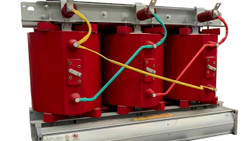As society continues transitioning to renewable energy sources, much attention has rightly focused on solar and wind power. However, a significant challenge lies in balancing the land needs of energy production against other vital uses like agriculture. Some propose that certain renewable technologies could actually help agriculture rather than competing for farmland. One such increasingly promising solution is agrivoltaics—the integration of solar photovoltaic panels with crop and livestock farming.
By designing solar panel frameworks that allow for simultaneous agriculture below, agrivoltaics aims to satisfy growing energy demands while preserving agricultural productivity on the same tracts of land.
How Agrivoltaic Systems Are Configured
At their core, agrivoltaic installations involve mounting solar panels on structures elevated high enough to permit continued agricultural use below. This configuration is sometimes called a "solar canopy" to distinguish it from ground-mounted solar farms that displace cropland. The key design priorities are allowing sufficient sunlight, airflow, irrigation access and machinery movement for vibrant crop growth underneath.
Common structural designs involve fixed-tilt or single-axis tracking panel mounts that are raised anywhere from 2 m to 4.5 m on metal or wooden pole frameworks. The height and layout parameters vary depending on the crop type, growth stages, and desired balance of solar energy capture versus agriculture. For example, vineyards and orchards may require taller clearances and wider spacing between panel rows compared to row crops. Livestock pastures may utilize designs optimized more for grazing than machinery access.

(credit CLOU)
Modelling studies indicate optimal solar panel coverage rates of around 30% of the total land area are usually sufficient to avoid significant agriculture yield losses for most temperate-zone crops. The exposed land between panel rows continues conventional growing operations like planting, spraying, and harvesting. Drip irrigation systems that distribute water underneath are also gaining attention to minimize shading impacts. Early adopters are experimenting with a diversity of crops from grapes to tomato to alfalfa beneath panels.
Electrical wiring and connectivity are analogous to regular ground-mounted solar arrays, except that mounting hardware and structuring must safely support both solar panel and agricultural loads in all weather conditions long-term. Tracking systems may require more robust torque tubes and foundations to balance between energy generation and farm vehicle traffic underneath. Overall, properly engineered agrivoltaic systems aim to establish mutually beneficial solar-agricultural productivity on the same plots of fertile soil.
Effects on Agriculture and the Land
Careful analysis of ongoing agrivoltaic projects provides encouraging signs that incorporating solar need not detract from—and may even enhance—agricultural yields in many cases. Studies from France and Japan found that common row crops like maize, soybean and wheat saw either no change or increases of 5% to 20% in production levels beneath properly designed solar panel canopies.
The hypothesized reasons for occasional yield boosts include decreased evapotranspiration from shading, sheltering from extreme weather, and concentrated sunlight delivering slightly higher photosynthesis rates. Similar gains have been observed for heat-loving crops like grapes. However, results can vary yearly depending on rainfall patterns, as canopy cover affects hydrologic cycles. More research continues optimizing specific row/plant configurations matched to different climates, terrains and crop types.
From a land use perspective, agrivoltaics directly preserve 100% of existing farmland, since the same plots support both energy and food production simultaneously. This starkly contrasts ground-mounted utility-scale solar farms that convert tens or hundreds of acres out of agricultural production altogether. It also overcomes siting issues with utility projects locating on rangeland or other non-cropped areas.
Adding solar power generation could even benefit certain types of marginal or degraded croplands. The canopy structures may help retain moisture, restore nutrients to the soil over time, and provide habitat for pollinators and other beneficial organisms—all while producing clean electricity. Furthermore, agrivoltaic systems offer continued landscape amenity valued in many agricultural communities.
Cost Considerations and the Economics of Agrivoltaics
From an infrastructure perspective, setting up the structural framework to mount both solar panels and enable compatible agriculture below incurs additional expenses beyond conventional ground-mounted solar farms. The costs of developing and optimizing suitable racking/mounting hardware, as well as engineering systems to accommodate farm vehicles and drainage, are also ongoing research areas.
However, proponents argue these higher upfront layout costs are balanced by several long term offsets. The dual use of land essentially offers "more bang for the buck" through producing two revenue streams—electricity and agricultural commodities—on the same plots. Meanwhile, continuing agricultural activities helps offset ongoing maintenance costs compared to left-fallow solar sites prone to vegetation overgrowth.
Cost-benefit analyses suggest agrivoltaic projects achieve overall levelized cost of electricity (LCOE) on par with standard utility-scale installations within 10 to15 years due to these factors. Additional revenue potential exists through various renewable energy credit programs as well as the “ecosystem services” of preserving functional farmland, including soil carbon sequestration and pollinator habitats that solar farms displace.
As the sector gains experience improving installation designs, supply chain economies of scale will likely drive hardware prices down further. At the same time, increasing carbon prices and incentives recognizing renewable energy's land use and agricultural co-benefits could enhance project profitability. Success will hinge on the research community continuing to address technical optimization and financing pathways tailored to agrivoltaics.
Continuing Advancement and Commercial Readiness
Encouraging early-stage developments—together with extensive modelling analyses—indicate agrivoltaics' technical viability and economic competitiveness are gradually improving. However, many innovations have yet to emerge from pilot phase to scale up commercially across diverse agricultural landscapes and climates worldwide. Further advances are thus ongoing in several fronts:
- Testing more crop types beyond vineyards and orchards to date in locations from California to India. Experiments with row and pastureland are revealing opportunities.
- Refining structural designs, mounting hardware, and on-site power systems suited for lower-cost deployment and easy integration into farming operations over decades.
- Developing integrated agronomic prescriptions for soil management, irrigation, and weed/pest approaches under partial shade conditions to maximize both agricultural and energy yields.
- Enhancing predictive climate/yield models to derisk private sector investment and scale-up planting calendars, cultivars and dual-use techniques.
- Exploring innovative financing vehicles to attract capital and make agrivoltaic projects financially competitive amid uncertain policy environments.
As these advancements bear fruit, the proven scalability and reliability of agrivoltaics will further strengthen their ability to help supplant fossil fuels without eroding farmland—and potentially to revitalize some marginal or degraded soils through ecologically symbiotic renewable infrastructure development. Their long-term potential to reconcile agriculture, habitat and solar adoption at the very large terawatt-scale of interventions needed draws growing research focus and ambition.
Takeaway
When done right, agrivoltaics offers great promise not just as an energy alternative, but as a way to proactively solve multiple land use challenges society faces this century as populations and economies grow. By preserving productive farmland ecosystems and rural livelihoods while powering the energy transition, it aims to achieve multiple sustainable development goals concurrently. As this agri-solar concept progresses, the integration of precise metering and advanced energy storage solutions becomes essential. These systems, developed by companies like CLOU, play an important role in ensuring the efficient distribution and utilization of renewable power generated by agrivoltaics. Such technology is crucial for balancing agricultural demands with energy production, enabling us to monitor and manage these resources effectively. Though still in advancement stages, dedicated efforts across disciplines suggest that with refinement, agrivoltaics can become a globally significant contributor to delivering renewable power without depleting Earth's finite and vital agricultural resources. Continued innovation in both the energy and agronomic fields will determine whether this integrated approach ultimately helps satisfy humanity's food, habitat, and clean energy demands for generations to come.
If you have any inquiries or need further information about the integration of energy metering and storage solutions in agrivoltaics or other renewable energy systems, please do not hesitate to reach out to us. We are here to assist you and welcome your valuable thoughts and comments.
Thank you for reading. If you would like to share your thoughts on this topic, please feel free to leave a comment below. We value your feedback and are always eager to hear from our readers.
Until then, keep shining bright like a solar panel on a sunny day!






All comments are moderated before being published. Inappropriate or off-topic comments may not be approved.